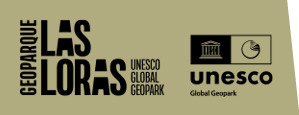Lora de Valdivia “Wolves’ trap”
(Pozo Lobos)
Hundreds of years ago the inhabitants of the Lora de Valdivia region designed and built this funnel-shaped trap in order to protect their cattle from wolves’ attacks. Don Gustavo Palacios Cenzano, the engineer operating the administrative demarcation of Ahedo Hill in 1977, stated by that time that Patricio, a 90 year-old man living in Revelillos, told him that the trap was still being used when he was a young man. This information sets the Wolves Trap in the Lora de la Valdivia still being used by the end of the 19th century.
These pit-like traps for wolves are structures of high ethnographic and heritage value, which were very common in the past in the north of the Iberian Peninsula (Castile-León, Cantabria, Navarra, Galicia and the north of Portugal). For centuries it was the best way to fight cattle farmers most feared enemy. Since firearms were scarce or did not exist for most of the population, this was the very best way to hunt wolves by that time. The structure consisted of a masonry oval-shaped enclosure with high walls surrounding a pit, where the wolf got trapped. Several barriers made of stone or logs converged and were extended for hundreds of meters towards the hill, drawing a V within the landscape.
Whenever a wolf was detected the bells of all villages would rang a specific clang, immediately recognized by the population and the hunt would be prepared right away.
Dozens of hunters screaming would push the wolf up the slope, leading it towards the Lora de Valdivia crags. The assault was led by a sound code which would not only frighten the wolf but also help the hunters to communicate with each other.
Inside the area flanked by the V-shaped high walls there were some camouflaged huts, where the final hunters would hide and incite the wolf with spears, pushing it into the pit, which was camouflaged with branches.
